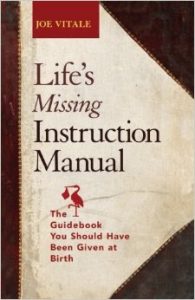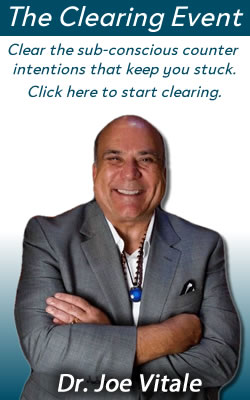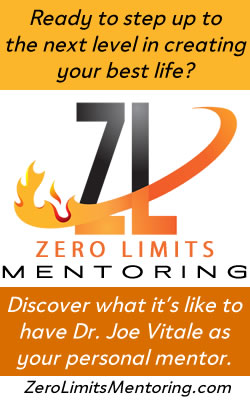Tag: the movie The Secret
Answers for Preeya
Preeya, editor of Journals of the World, sent me a list of interesting questions. You can find them below, with my answers, or at her site. Enjoy!
– Knowing that every person has their own reality and that our thoughts
can shape our reality. When did this realisation come to you and how did
you manage to apply it your everyday life?
I first heard of the idea as a child in the 1960s, from reading books by Robert Collier. But I didn’t even begin to grasp the concept until I read the Seth books, by Jane Roberts, while broke and struggling as a young adult in the 1980s. And even then I didn’t fully integrate the ideas into my day to day life until decades later. Today I still need to remind myself that what I see is based on my perceptions, on my version of reality, and that everyone has their own version of reality. Reminding myself of this key concept makes life easier.
– What exactly inspires you?
I never know. Each day is different. Generally, books and ideas inspire me. But so do some people. I became a writer because of the authors who inspired me, like Jack London and Shirley Jackson. I became a musician because of singer-songwriters who inspired me, such as Neil Diamond and Rob Thomas. I became a strongman, doing feats of strength, after being inspired by people like Dennis Rogers and Iron Tamer David Whitley. I simply allow my passions to inspire me and follow them where they lead.
– Being involved in ‘The Secret’ documentary, a worldwide hit based on
the law of attraction, how did you get involved in it and what did it
mean to you to be part of such a production?
Rhonda Byrne, the producer of the movie, called me after reading my book, The Attractor Factor. She said she was making a movie and wanted me in it. I was flattered and agreed. I had no idea what I was getting into. The movie changed my life forever. I had a degree of fame as a marketer and copywriter before it, but being in the movie established me as a self-help teacher to the globe. It’s led to numerous opportunities and travels. I am forever grateful.
– The whole concept of the law of attraction is a difficult one to get
your head around for someone who is new to the topic. What message or
advice would you give to these people reading?
I’d say don’t worry about it. Over thinking the law of attraction is like over thinking the law of gravity. You simply need to know how to work with the laws. In the case of LOA, you have to remember that your unconscious beliefs are creating your reality. Learn ways to change your hidden operating beliefs and you’ll have a more fantastic life.
– You have spoken about being homeless and in poverty for many years,
and have now published a great book called ‘Attract Money Now’. But what
does money do for you?
Money does the same thing for me as it does for you: it enables you to live your dreams. I’ve written a new book, The Awakened Millionaire, which is a manifesto for people to live their life mission and to realize that money helps them fulfill their life mission. Money is simply a tool to fulfill dreams. Nothing more.
– When being introduced to the law of attraction, many of us only
believe it to be true once it has worked for us. Knowing its power, what
is the next goal you would like to achieve?
I have numerous goals. Creating a society of Awakened Millionaires is one. Ending homelessness is another. Writing new books that inspire and transform the planet is another.
Ao Akua,
Imaginotions: Part Five
The young woman awakened early, stirred by the flutter of a bird.
She went to her window and saw a bluejay sitting there.
“Good morning,” she said.
The bluejay seemed to wink.
She went to her mirror.
To her confusion, she saw nothing there.
She gasped.
“Why-Why…” she stammered, not sure what to say at her empty mirror.
“Have no fear,” a voice said from outside the window.
She spun around and looked at the window.
The bird was still there.
“Have no fear,” the bird repeated.
This was almost too much for the young woman.
No reflection in her mirror?
A bird that talks?
“Have no fear,” again said the bluejay.
“But I-I don’t understand!”
“Have no fear.”
“But I can’t see myself!” she exclaimed, getting panicky. “And you’re TALKING!”
“The nothingness you see in the mirror is the mirror of the real you,” said the bird.
“I am nothing?!”
“You are everything.”
“But I see nothing in the mirror!”
“Look again,” suggested the bird.
The young woman took a breath, calmed down a bit, and looked into her mirror.
Suddenly she realized all she saw in it was all she felt in her.
The mirror was her.
The mirror reflected all within and appeared without.
She slowly smiled.
“I think I understand,” she said, half to herself.
The bird smiled.
“But what about this business of a bluejay speaking?” she asked.
“Ah, but within the dream, all is possible.”
“All?”
“Whatever you can imagine, and can believe, can be achieved.”
“You sound like Napoleon Hill,” the woman said, smiling.
“I can read, too,” said the bird.
“All things really are possible,” mused the woman.
“And now you may awaken,” said the bird.
Thus the bluejay ended the lesson for the day.
Ao Akua,
PS – You know what this means.
Imaginotions: Part Four
“What do you see?”
He was in an eyeglass store, trying on new glasses.
“I see you, but not very clearly.”
“Good,” the clerk said, smiling, handing him another pair. “Try these on.”
He did.
“What do you see now?”
“I see you, but you are fuzzy.”
The clerk handed him another pair of glasses.
“And now?”
“And now you are tinted.”
Yet another pair of glasses were handed over.
“And now?”
“There you are! I can see clearly now!”
“Good,” said the clerk. “We have discovered that when you have the right pair of glasses to see through, the world is clear and in focus.”
“Like life?”
“Yes,” giggled the clerk. “Glasses are filters, just like the perceptions of your mind.”
“You are very wise, for an eyeglass store clerk.”
“Oh, thank you, but I had to see through the right glasses, too.”
“I’m glad I found the right pair to look through.”
“They were waiting for you all along.”
Ao Akua,
PS – You know what this means.
Why Give Now?
You’ve heard that it pays to give, haven’t you?
You’ve heard about tithing as a way to give thanks for what you have and to begin to attract more of what you want, correct?
You’ve heard the stories of famous millionaires and billionaires who give away staggering amounts of money, right?
Well, do YOU give?
Do you give ten percent of your income to the people and places that inspire you, nurture you, and keep you balanced?
Probably not.
I know because I was just like you.
I heard all the stories about giving as a way to receive.
I heard all the teachers and preachers tell me to give more and give often.
But I was “too smart” for that.
I “knew” it was all a scam to get my money.
But one day I awakened to a harsh insight:
The longer I stubbornly refused to give, the longer I remained in struggle.
“No one has ever become poor by giving.” ― Anne Frank
When I finally realized that if I can’t give a dollar out of my last ten bucks today, then I won’t be able to give a hundred thousand dollars out of my first million tomorrow.
It’s a form of self-sabotage to think otherwise.
People who convince themselves that they’ll give later, when they have more money and can “afford it,” are deceiving and deluding themselves.
It all begins now.
Today.
Today I give away everything from books to guitars to cars to cash.
You might think I do it because I’m wealthy.
But I started doing it when I was working a job I didn’t like, getting paid just above minimum wage, and had stacks of bills just like you.
I started giving with what I could give.
As I gave, and prospered, I let my giving reflect my receiving.
And the more I gave, the more I received.
Today wealthy people – and not so wealthy people – are giving.
The big mistake most people make in giving is waiting.
The second big mistake they make is in where to give.
Here’s my thought on the matter:
Give now.
You have some money.
Take ten percent of it and give it away.
Don’t wait till you have more, as you are missing the prosperity of right now.
Where?
Give it to whoever or whatever gave you spiritual nourishment this past week.
That could be anyone or anything, from an Uber driver to a neighbor to a complete stranger who smiled and turned your day around.
But you have to start today and you have to give where you receive inspiration.
Why is this so important?
According to Edward Kramer, in his 1955 book, Pathways to Power:
“Clarence Howard, late head of Commonwealth Steel, used to say, ‘The hole you give through is the hole you receive through.'”
Dan Kennedy, marketing legend, often says it this way:
“The window you receive through is made bigger by how much you give.”
In other words, psychologically and metaphysically, the more you give, the more you open yourself to receive.
And don’t trick yourself into thinking because you helped a neighbor move a couch that you gave.
You gave muscle, but not money.
And don’t think because you took friends out to eat that you gave.
You bought dinner but you didn’t dish out money.
The law is specific: give ten percent or more of what you receive financially to where you received spiritual nourishment.
When you’re honest with yourself, you know who to give it to.
Do it.
Now.
One final thought:
Don’t worry about what the receiver does with what you give.
It doesn’t matter if they burn it, spend it, invest it, give it away, or anything else.
Your duty – if you want to attract more money – is to give now and give often and give where you received inspiration.
Why not do it right now?
Ao Akua,
PS – A decade or so ago I wrote a little book on this subject, titled The Greatest Money-Making Secret in History. I also explain this concept in my free book, Attract Money Now.
Imaginotions: Part Two
“How many grains of salt are there in a mustard seed?” the bird asked.
It was strange enough that a bird was talking. The question was also halting.
“I don’t know.”
“Take a guess,” urged the bird.
“I’d say none.”
“Ah, but you would be wrong,” sang the bird.
“Explain, please.”
“Within the mustard seed are universes of possibility,” explained the bird. “They each await your water and sunshine, which you deliver as attention.”
“I don’t understand.”
“One day you will or won’t,” fluttered the bird.
“But what are you trying to tell me?”
“If you have faith…”
“Like a mustard seed?”
“…then you can move mountains with your word and deed.”
“And one day see birds that talk?”
“Now you’re getting it.”
Are you?
Ao Akua,
PS – You know what this means.









